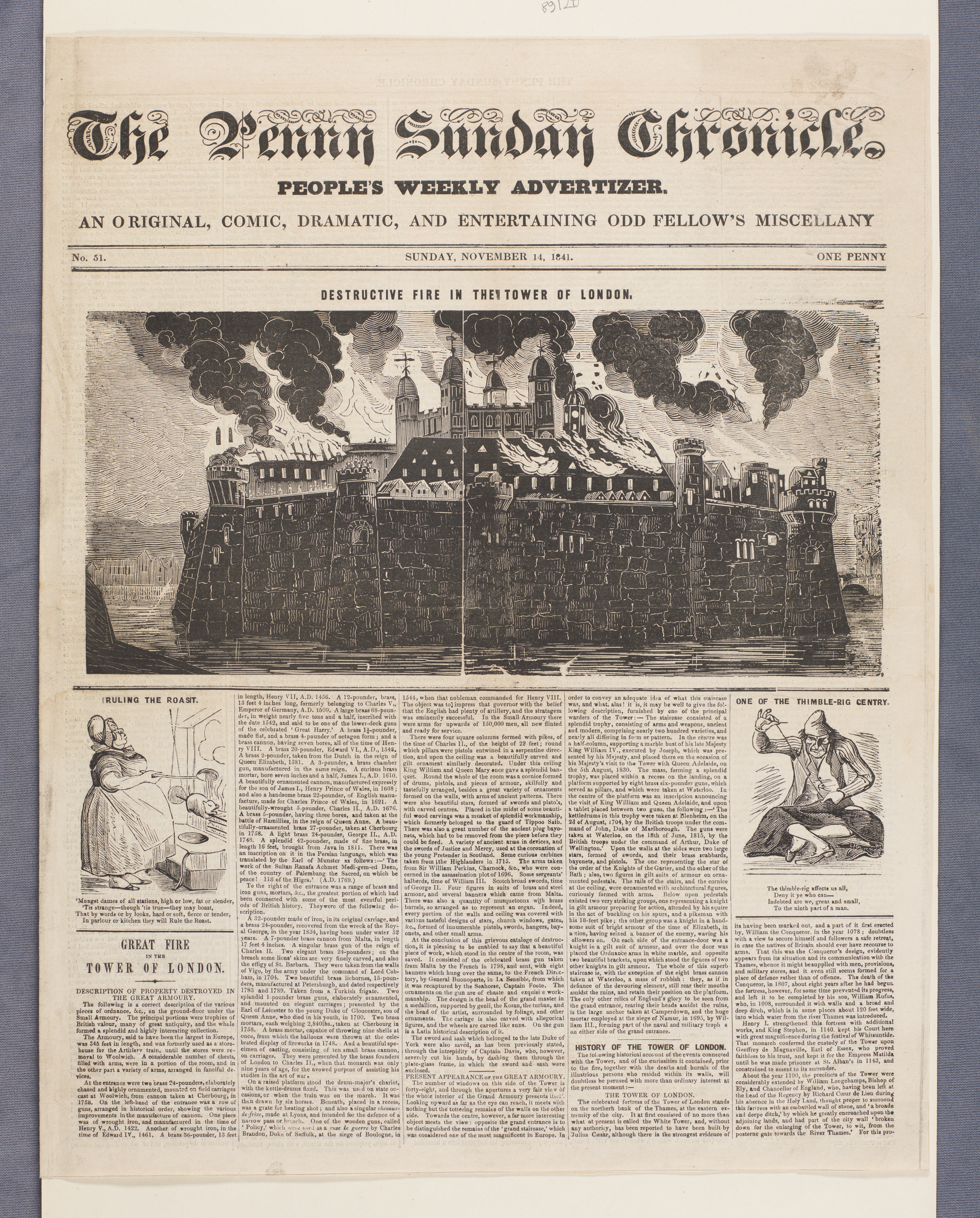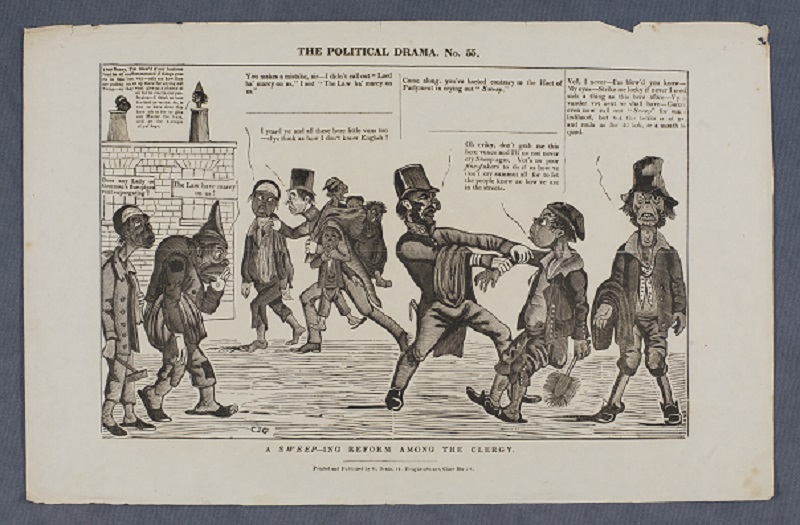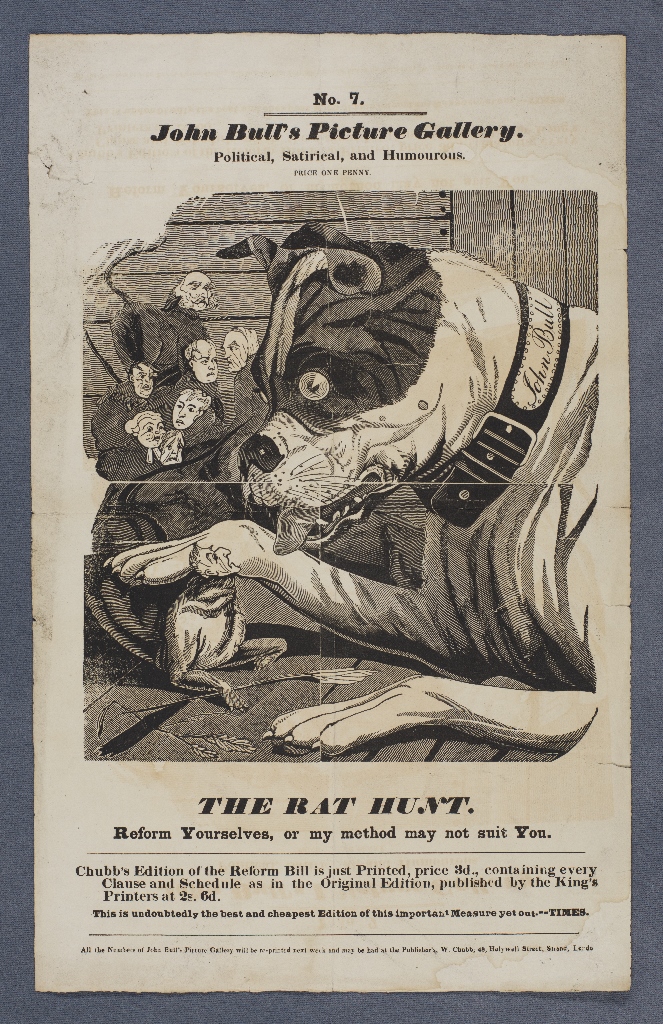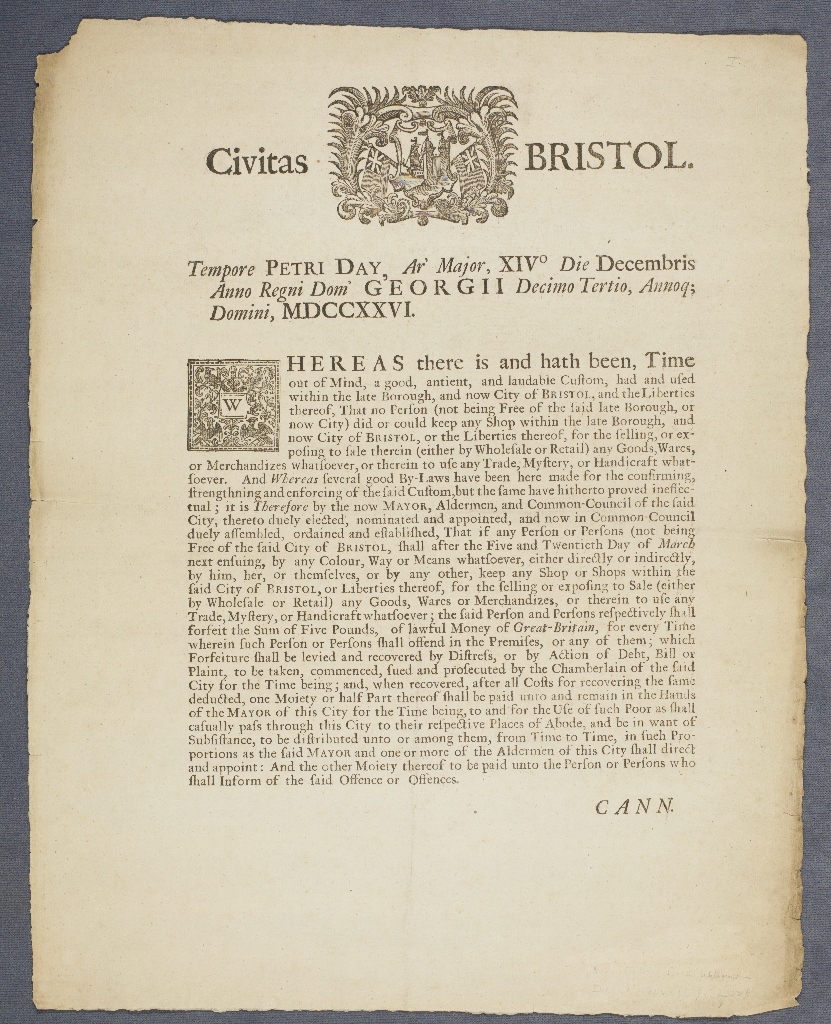
“Three symmetrically prancing lions (left) and Napoleon (right) as ‘The Beast’ face each other across a narrow channel. In the background (left) John Bull, an obese citizen, sits surrounded by casks and bales (one marked ‘I’ or ‘L M’) under the Tree of the ‘Constitution’. This has three branches: in the uppermost is a royal crown, the others (presumably) represent the Lords and Commons, … Behind him are symbols of industry: men reaping, a bee-hive, a thatched farm-house. Above the tree flies an angel with a flaming sword … Napoleon’s head is scarcely caricatured, but has two horns – on one is poised an imperial crown, on the other the Papal tiara. In his dragon’s claws he holds up a dagger and three short chains (for the lions); he is branded ‘666’, and his tail is triply barbed. He has webbed wings, scaly shoulders, and a tiger-like body. Under his feet are broken fragments of crowns, sceptres, and crosiers. … In the background (right) two demons fly above a breaking staff surmounted with the cap of liberty; at its feet lies a man in chains. A firing squad aims at women and children; buildings are in flames. The (printed) ‘Explanation: ‘JOHN BULL is sitting under his favourite Oak, supported by Commerce and Industry reaping the Fruits of his Labors, and protected by the power of God, whilst France is enslaved under their Tree of Liberty, which is falling to the Ground – the Honors and Independence of Nations are broken and trampled underfoot, and all the Horrors of War are extending their Ravages with unremitting fury. – Bonaparte is considered as the Dragon, the Beast, and the false Prophet, Rev. xvi. 13, xiii. II, and following verses, xix. 20 – and also as Gog, Ezek. xxxviii. and xxxix. – His brutal and ferocious Dispositions are represented by the Body and Feet of a Tyger; his inordinate Desires, by the Chest, Wings, and Claws of a Dragon, holding out Death or Slavery; his Head with two Horns represents his civil and ecclesiastical Authority; and is intended to point out, that though a Dragon and a Tyger have been the most dreadful and destructive of all real and imaginary Creatures, yet even their horrid Natures are surpassed by the sanguinary and rapacious Dispositions of that implacable Tyrant. – The THREE LIONS represent the united Naval, Regular and Volunteer Force of England, Scotland, and Ireland, watching the Monster’s Motions, and springing forth eager to meet him.”–British Museum online catalogue.
- Title: An hieroglyphic, describing the state of Great Britain and the continent of Europe, for 1804 [graphic] / I.[?]M.
- Publication: [London : Printed by C. Stower, Charles Street, Hatton Garden, for the “Prophetic mirror, or A hint to England” by L. Mayer, 1804]
Catalog Record & Digital Collection
804.00.00.19+
Acquired May 2016










